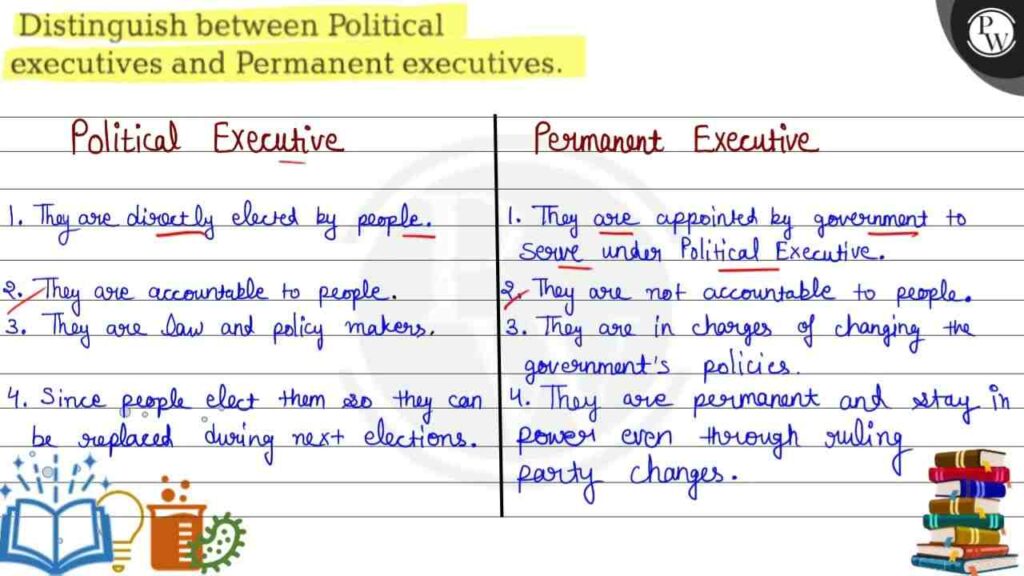
Explore 10 Difference between Political Executive and Permanent Executive
In the realm of governance, two critical components play distinct yet interconnected roles: the political executive and the permanent executive. These entities share responsibilities in steering the affairs of a nation, but their functions and characteristics differ significantly. This article aims to shed light on ten fundamental difference between the political executive and the permanent executive, highlighting their respective roles in a tone that resonates with human discourse.
10 Difference between political executive and permanent executive
Nature of Appointment: Elections or a head of state appointed by the people, who represent the people’s will, are the two methods used to appoint the political executive. The permanent executive, on the other hand, is chosen through a rigorous selection process and is appointed based on merit and expertise.
Tenure and Stability: Depending on the particular political system, political executives typically have finite terms that are subject to electoral cycles. Permanent executives, on the other hand, benefit from a higher level of stability because their appointments are typically long-term or until they retire.
Political Affiliation: Members of the political executive frequently represent the prevailing ideologies of the electorate by having affiliations with political parties and ideologies. The permanent executive, in contrast, operates impartially, emphasising the implementation of policies regardless of political inclinations.
Decision-Making Authority: Political executives, who create policies and give the government strategic direction, have the final say in all matters of decision-making. Permanent executives, on the other hand, exercise delegated decision-making authority and carry out policies and programmes in accordance with the political executive’s instructions.
Accountability: Political leaders must answer to the general populace or the head of state, and their choices and actions are scrutinised and criticised. Permanent executives are primarily answerable to their administrative hierarchical superiors, ensuring efficiency and protocol adherence.
Expertise and Specialization: Political executives are generalists in their knowledge and abilities and are in charge of overseeing a variety of governmental functions. Permanent executives, on the other hand, frequently possess specialised knowledge that enables efficient implementation of policies and programmes. They are frequently experts in their respective fields.
Governance continuity: Political executives change with each election cycle, possibly leading to changes in priorities and policies. The permanent executive maintains continuity despite political changes by offering institutional knowledge and experience.
Administrative Tasks: While the permanent executive is in charge of managing daily administrative activities, managing the implementation of policies, and supervising the operation of government departments, political executives are primarily responsible for setting the overall vision and direction of the government.
Policy Formulation: Political executives are primarily in charge of formulating policies, which are frequently based on the platform of their party or popular opinion. The technical advice and insights provided by permanent executives help to ensure the viability and applicability of policy proposals.
Interactions with the Public: Political leaders interact frequently with the general public by giving speeches, attending rallies, and participating in other open forums. Through their administrative responsibilities, which include ensuring efficient service delivery and resolving customer complaints, permanent executives primarily interact with the public in an indirect manner.
The pillars of governance are the political executive and the permanent executive, each of which has a specific function in the operation of a country. For one to appreciate the delicate balance between political mandates and administrative effectiveness, one must first understand their differences. We can encourage effective governance that reflects the aspirations of the people while ensuring the efficient operation of public administration by acknowledging and respecting the distinctive contributions of both entities.
Also Read: Discover 10 Key Difference between one way slab and two way slab